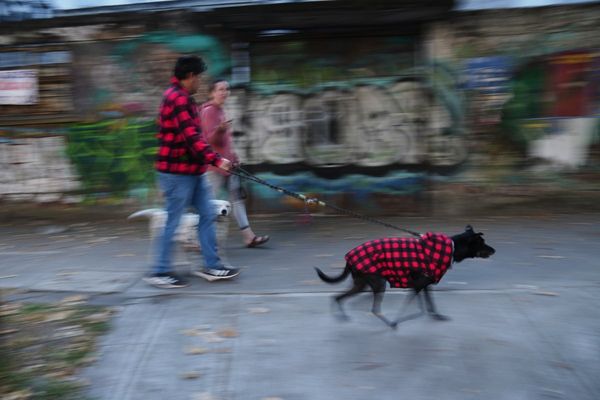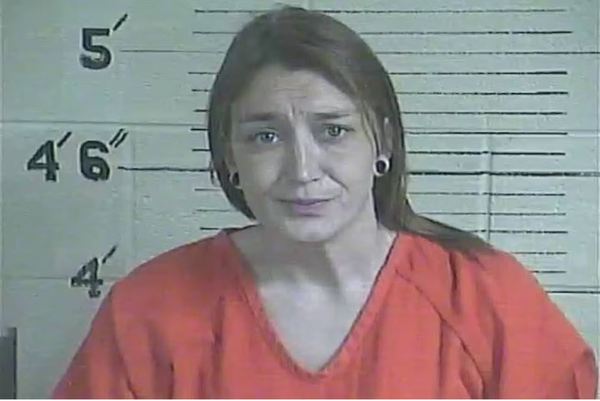On the afternoon of Aug. 5, a 70-year-old woman received troubling messages on her smartphone from her son, who runs a store selling musical instruments in Suginami Ward, Tokyo.
"I can't breathe well," the 45-year-old man wrote. "The oxygen is too thin."
The man had been found to be infected with the novel coronavirus at the end of July. He normally lived with his parents in another ward, but he was staying alone at his store to avoiding spreading the virus to them.
Until the previous day, he had sent his mother messages saying he was alright. But he sounded different on Aug. 5. He wrote: "My nose is completely congested" and "I can't walk without almost falling down."
The man's mother asked if he could be admitted to a hospital, but he replied: "I can't take phone calls from the public health center. When it starts ringing, I try to answer, but I'm not quick enough ... When I called them, they told me they would call me back and asked me to wait for it."
Suginami Ward's public health center is responsible for checking the condition of COVID-19 patients staying at home, but it was having a hard time locating the man. The center had been calling his mobile phone since Aug. 2, but never got through.
On Aug. 5, the center dispatched a staff worker to the address that the man had registered with them as the place for his recuperation. However, they could not find him and gave up trying to confirm his safety that day.
Two days later, his mother found him dead inside the store. He had died of pneumonia caused by the novel coronavirus.
The address registered with the health center includes the building where his store was located and an apartment building as well. However, the center worker only visited the apartment building.
"I'd never thought my son would die," his mother said.
During the fifth wave of infections this summer, a peak number of 130,000 patients were staying at home across Japan. In Tokyo alone, 53 of these patients died from late July to September. Why did so many deaths occur?
-- Tokyo system overwhelmed
The man's death in early August occurred in the middle of the infection surge.
On Aug. 5, the daily number of newly infected people in Tokyo exceeded 5,000 for the first time. The number of COVID-19 patients staying at home drastically increased due to a shortage of hospital beds. In Suginami Ward, there were more than 1,000 such patients.
At that time, Suginami Ward's public health center increased the number of workers checking the condition of patients at home from 55 to 72, but their workload continued increasing.
The smartphone messages that the man sent to his mother indicate that he contacted the health center and waited for a return call. The ward government's investigation so far has found no record of a phone conversation with the man.
Ryo Tanaka, the ward mayor, said: "We must not make the same mistake if a sixth wave of infections comes. We will step up efforts to watch over patients more carefully so that no one will die without being contacted."
-- Osaka's proactive approach
From July to September, a total of 200,000 people were reported to be newly infected in Tokyo. Of them, 26,000 stayed at home during the peak period.
More than 50 died -- more than 20 passed away at home, while some others died at hospitals where they were taken by ambulance.
The situation is very different in Osaka Prefecture, which also comprises a metropolitan area with a large population. The total number of the newly infected in the same period was about 96,000. At the peak period, more than 18,000 patients were staying at home, and only one died at home.
Why is there such a difference?
"Osaka [Prefecture] was able to increase the number of accommodations where patients can stay. That worked well," said Mutsuko Fujii, head of the Osaka prefectural government's Public Health and Medical Affairs Department.
In the Kansai region, which includes Osaka Prefecture, a contagious new variant of the coronavirus spread earlier than in Tokyo and the surrounding region during the fourth wave of infections in the spring, causing the deaths of 19 people at home.
Taking the situation seriously, the prefectural government increased the number of hospital beds by 30% and more than doubled the number of available hotel rooms from about 4,000 to about 8,400.
The Osaka Nursing Association fully cooperated in constantly stationing nurses at these hotels.
"We provided nurses with careful training, including how to put on and take off protective clothing, and created a safe environment where they can work without anxiety," said Hiroe Takahashi, chairperson of the association. "As a result, we were also able to recruit excellent nurses who usually work in other prefectures."
The Osaka prefectural government has introduced a policy of having COVID-19 patients stay at accommodations, in principle, if they are not in a hospital. Up to about 3,500 patients a day used these accommodations.
By providing online consultations and other services, Osaka has been able to treat many people at an early stage and reduce the number of patients who become seriously ill, according to a high-ranking prefectural government official.
In Tokyo, however, the number of hotel rooms to accommodate patients was about 3,300, significantly fewer than in Osaka Prefecture, and the number of users a day was about 2,200 at the peak. In Suginami Ward, only 54 of about 700 patients at home were accepted at these accommodations as of Aug. 1.
"We weren't able to get as many nurses as we wanted, partly because the vaccinations [which need nurses] were going on. As a result, we couldn't increase the number of hotel rooms," said a high-ranking official of the Tokyo metropolitan government's Social Welfare and Public Health Bureau.
-- Examining follow-up systems
Both Osaka and Tokyo have follow-up systems for patients at home, but they function differently.
In Tokyo, the burden of conducting health checks was initially shared by public health centers and the metropolitan government's follow-up center.
As the follow-up center became unable to deal with the rapid increase of at-home patients and the resulting increased workload, it started to limit health check targets to people younger than 30 as of July 28. This increased the workload of public health centers, causing delays in health checks and other problems in various places in Tokyo's 23 wards.
In contrast, in Osaka Prefecture, health checks and safety checks were provided not only by phone but also through home visits. In cooperation with the existing system of home-visiting nurses, a total of about 350 visits were made in August and September, resulting in early treatment and hospitalization in some cases.
On Oct. 1, the Health, Labor and Welfare Ministry asked all the prefectural governments to improve their health and medical systems to prepare for a sixth wave of infections.
A senior ministry official said: "What could be done in Osaka must be possible in Tokyo. It's necessary to establish a system that makes it possible to contact infected people as early as possible, and treat them in hospitals or have them stay at hotels or elsewhere, depending on their symptoms."
Read more from The Japan News at https://japannews.yomiuri.co.jp/







